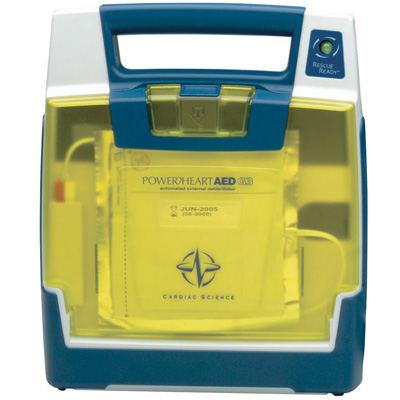Missing a Beat: What Most People Do Not Know about AEDs
Sudden cardiac arrest kills about 300,000 people each year. That number persists even though an Automated External Defibrillator (AED) is available for first aid.
As Mark Harris pointed out in The Shocking Truth about Defibrillators, the death rate by cardiac arrest has not decreased in the past 20 years. So, what do responders keep doing wrong? Here are some of the important things most people miss about AEDs:
It is the heart with a lightning bolt. First things first; you have to know how to spot a heart defibrillator. AEDs are indicated by a heart with a lightning bolt. If you don’t know this, you might find yourself searching for an AED, not realizing you’re already staring at one.
Defibrillators are for cardiac arrest, not heart attack. A heart attack happens when blood cannot flow properly through the body, so the person stays conscious for some time. On the other hand, a cardiac arrest occurs when the heart itself stops beating. With no blood flowing through the brain and lungs, the person would fall unconscious. This is what AEDs are for — to “reboot” the heart and put its pumping mechanism back to work.
Keep your heart defibrillator close. Once the heart stops beating, every minute counts. Defibrillation must be done within ten minutes of the first signs of a cardiac arrest. According to the American Heart Association, chances of survival go down by 7 to 10 percent every minute defibrillation is delayed. Your AED will do you no good if it’s a building away or locked up.
Buy time with CPR. If the nearest portable defibrillator is three blocks away, your best chance of saving a person is through CPR. You have to make the blood flow through the vital organs, and since the device that could do this is not available, you have to do it manually. CPR is performed by pumping the person’s chest 2 inches deep at a rate of 100 compressions per minute. However, remember that CPR will not save the day. It will only buy you precious minutes while someone fetches the AED.
Defibrillators cannot hurt you. AEDs can’t randomly shock a normal person. Defibrillators have a mechanism that analyzes the heart’s rhythm. If it senses that something’s wrong, that’s the only time it will deliver a shock.
Lack of training causes cardiac arrest fatalities despite the presence of defibrillators. Train your employees on the basics of defibrillation, so they can save a life next time someone’s heart skips more than just a beat.
###
Connect with Hazel Evangelista on Google+
###
Editor’s Note: What other important things should people know about AEDs? Share your thoughts with the Emedco community.


